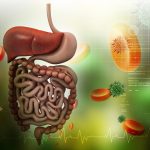Preparing nutritionally for exercise can improve your performance while decreasing chances of injury. Using the same principles year round can improve your overall health.
Energy Principles
Your body stores energy for immediate use as carbohydrate (sugars / starches / glycogen). “Long haul” energy stores include lipids (fat / fatty acids), and to a lesser extent, protein (muscle). You use these sources of energy differently depending on the intensity and duration of exercise. You use primarily glycogen / carbohydrate initially, but burn more lipids or fat as activity progresses. You must still burn some glycogen while burning fat and low glycogen levels are the cause of “hitting the wall”. Lower intensity levels of activity burn more fat. Consistent physical and nutritional training can almost double your ability to store glycogen, and your muscles can become more efficient consumers of stored fat. Proper nutritional goals are to maximize energy stores and prevent fluid depletion.
Calculating Caloric Needs
Your nutrition requirements are most dependent on your levels of activity and your body weight. Gender and level of conditioning are also relevant. Follow these steps to get an idea of your energy requirements.
First Calculate your Resting Metabolic Rate (RMR) and adjust for your level of activity.
- Male RMR = 900 + (10 x Wt. in Kg.); Female RMR = 700 + (7 x Wt. in Kg.)
- (Kg.=Lbs./2.2)
- RMR x 1.2 = Sedentary Caloric Needs ( 1-3 / 10 )
- RMR x 1.4 = Moderate Caloric Needs ( 4-6 / 10 )
- RMR x 1.8 = Active Caloric Needs ( 7-10 / 10 )
Second, determine how many grams of protein you need @ 1.2-1.4 gms/Kg Body Wt. Multiply this by 4 Cal/gm. for protein calories needed. The number of ounces of lean meat or cheese needed is determined by dividing calories of protein by 7. (There are roughly 7 gms. of protein/ounce of meat).
Third, subtract protein calories from your total calories required. 85% of this value are the number of Carbohydrate calories you should have. The remaining 5-15% of calories should be in Fats. Decreasing caloric intake by 500 Cal / day (in fat & carbo Cals) below maintenance caloric intake should result in a one pound per week weight loss.
What To Eat
The recommendations below are based on Activity levels of 7-10, & should be modified according to your activity level.
General: Athletes in training should take in about 75% of total calories as complex carbohydrates such as pasta, vegetables, cereals, breads, unrefined grains, fruits, and potatoes. Depending on your level of training, you may require up to 4.5 grams complex carbohydrate per lb. body wt. per day (e.g. College and High School runners or swimmers). 100 grams of protein per day (1.4 gm / kg Ideal Body Weight) is usually adequate. A 150 lb. 35 Y.O. with activity level 7/10 needs 2500 Cal / day. Oleic and Linoleic acid are the only fats that are essential. High complex carbohydrate diets (around 70% total calories) sustain optimal performance in athletes who train strenuously and frequently. Shortfalls in caloric intake can be made up in higher fat foods IF high levels of activity are maintained. Fat content will need to be decreased if activity levels decrease.
Pre Event: Pre-event feedings should consist of 2.5 grams carbohydrate per lb. body wt. Pasta etc. can be used at least four hours prior to exercise, while liquid forms such as 10% carbohydrate (glucose polymer) sports drinks are best within one hour of running. A combination of fructose, glucose, and glucose polymers is best. Amounts are discussed below. Fatty foods delay stomach emptying and should be avoided in pre event meals. Medium Chain Triglycerides have not been found helpful
During Event: See fluids below.
Post Event: After exercise you should begin replacing lost glycogen stores immediately. You should aim for 0.3 grams carbohydrate per lb. body weight per hour up to 4-7 grams per lb. body wt. over 24 hours. For optimal muscle glycogen recovery start immediately after the event.
What to Drink
Pre activity fluids should include one pint of cold water one hour prior to strenuous or prolonged exercise. You can drink up to 20 ounces of cold water or a sports drink up to 15 minutes before starting to compete. My personal experience suggests you do this in sips over time and adjust to your own body. Adjust this in training rather than experimenting during a competition. During strenuous activity you should take in 4-5 ounces of water or sports drink every 10 to 15 minutes. Remember that thirst is not an accurate measure of fluid needs during exercise. A 10% glucose polymer drink has been shown to enhance endurance in several studies (look for terms such as glucose polymers or maltodextran in the ingredients list). Electrolyte (salt) replacement has not been found necessary for activities less than four hours.
Other Issues
Fructose (fruit sugar) increases energy/glycogen storage mostly in the liver; glucose is utilized by the muscles. Glucose polymers are metabolized more slowly so last longer.
Eccentric exercise (running downhill) can induce more muscle injury and can delay glycogen replacement even 2 to 10 days after exercise.
Caffeine, up to 2 cups prior to an activity, may enhance performance by improving fat burning and decreasing glycogen use. However caffeine is a diuretic and can lead to dehydration and “pit stops”. If you drink four average cups of coffee, the International. Olympic Committee will disqualify you.
Carbohydrate loading: Start a week prior to the event by gradually decreasing exercise level by 1/3 and maintain 70 % complex carbohydrates in your diet. Four days prior to the event increase complex carbohydrates to 80 to 85% of total intake and decrease exercise levels even further. Carbo loading generally only helps in exercise lasting more than one hour or in multi-event competition. A 1995 study suggested that women burn more fat than carbohydrate while exercising compared to men, and predictably benefited very little from a carbo loading regime.
Minerals, Supplements, and Vitamins (Ergogenic Aids) have been aggressively marketed as an “Edge” to sports participants for some time. Over 624 different supplements are targeted toward body builders alone! Sodium bicarbonate and phosphate salts have not been found to be toxic, but their ergogenic claims are not reproducible. Substances such as amino acids (Arginine, Ornithine), bee pollen, Vit B15, L-carnitine, inosine, Coenzyme Q10, or alcohol are not only unproven but can be harmful or lethal. Recent double blind (i.e. compared to controls) studies of Creatine, Arginine, Coenzyme Q-10, Inosine, & Vanadyl could not identify improvements in endurance, strength, “Fat burning”, or recovery times. Many herbal remedies such as Ma Huang (ephedra, caffeine, & theophylline), Ginseng, Guarana, Bladderwrack, Gotu Kola, etc., are ineffective in controlled studies and there are reports of harmful or lethal ingestion. Many of these substances are hyped as “Ancient Oriental remedies with thousands of years of use”; just like the notion that rhino horn imparts virility; or Mandrake root is beneficial because the root is shaped like a human form! The concentration of active substances and presence of toxic impurities is not regulated (Recall the lethal ingestions of impure Tryptophan in 1992.). Beware of anecdotal claims for performance enhancement without documented research that has been confirmed by someone other than the manufacturer. If a product makes drug-like claims but in the :”Fine Print” is actually marketed as a food substance, chances are it can’t withstand the scrutiny of FDA approval and should be avoided.
Medium Chain Triglycerides may be helpful for endurance, but are not available in a reasonable tasting form yet.
Special note should be made of Chromium Picolinate, since its use is so pervasive. Mertz et al suggested in 1979 that chromium in conjunction with nicotinic acid (Chromium Polynicotinate, a chelation or caging of chromium inside nicotinic acid molecules) may enhance the efficiency of insulin at the insulin receptor site on muscle cells. This should then result in improved intake of sugar into the cell and perhaps improve athletic performance. Recently even Dr. Mertz has conceded his initial findings probably exaggerated the importance of chromium or nicotinic acid relative to potassium and magnesium in this regard. A small (8 subjects) study by Evans in 1989 suggested that chromium picolinate (no relation to polynicotinate) increased lean body mass in some male athletes. Numerous studies under more rigorous control failed to show any benefit. Picolinic acid has been shown to damage chromosomes in the amounts used in some supplements and is implicated in Colon cancer! Chromium in large doses has also been implicated as a carcinogen. Picolinic acid has been shown to interfere with Iron absorption; a mineral recently shown to enhance the performance of professional male soccer players in Spain. Another recent study showed no improved absorption of Chromium Picolinate over the much less expensive Chromium Chloride. It is best to avoid any supplement advertising chromium picolinate. The FDA has repeatedly closed down the distributors of this potential toxin (Nutrition 21), and the FTC recently barred Nutrition 21 from advertising unfounded claims. It is estimated that Chromium Picolinate is a $100-million industry. A thorough evaluation of chromium was published in the June 1996 issue of The American Journal of Clinical Nutrition.
DHEA is the latest “wonder food” making drug-like claims for weight loss, enhanced performance, and an improved love life. It is a plant derived version of a human steroid produced by the adrenal gland that can be changed into sex hormones in other tissues. It has been shown to cause weight loss in rats, but actually increases unhealthy abdominal fat in humans! It tends to become a female hormone in men, and a male hormone in women! It may cause an imbalance in the brain’s control of the Adrenal gland with prolonged use. Initial studies suggesting decreased risk of heart attack, improved libido, enhanced mental processes, and increased lean muscle mass has not been substantiated in humans. It may have a role in Rheumatoid arthritis or AIDS.
Preliminary reports that Creatine monohydrate (20 gm/day x 14 days) may increase anaerobic work capacity, bench press strength, and muscle endurance were not supported by larger studies.
Several studies have shown an increase in free radicals and other “oxidizers” after strenuous exercise. There is some evidence that 1200 units of the “anti oxidant” d-alpha tocophoral (Vit. E) may diminish chromosomal or other tissue damage associated with these substances. These findings have been verified in independent studies, which studied the effects after two or more months of daily use.










